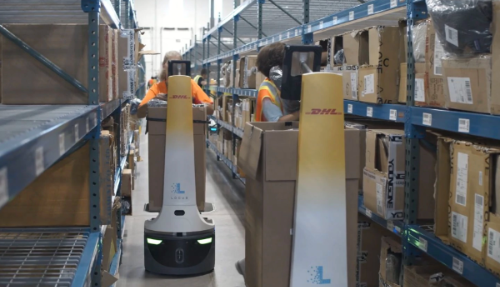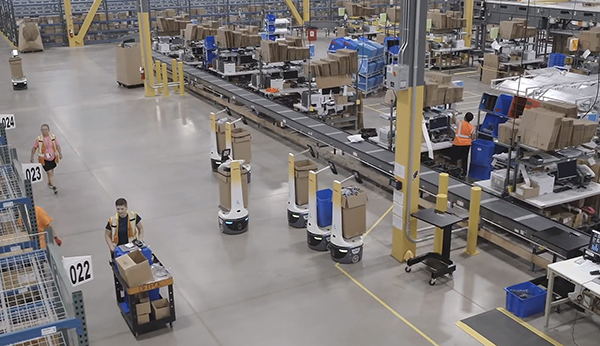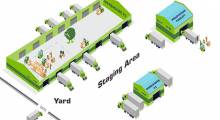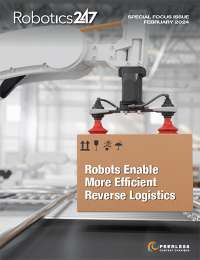DHL Supply Chain today announced that it plans to acquire up to 2,000 mobile robots from Locus Robotics Corp. as part of its wider Accelerated Digitalization Strategy. The global logistics company is expanding its four-year-old relationship with Locus in its largest deployment to date.
“It is particularly important for us to be able to consistently optimize our supply chains—assisted picking robots are very effective in this respect,” stated Markus Voss, global chief operating officer and CIO of DHL Supply Chain. “So far, more than 500 assisted picking robots are already in industrial use in our warehouses in the U.S.A., Europe, and the U.K. By the end of 2021, another 500 robots are to be added in a total of more than 20 locations.”
Locus Robotics meets accelerated demand
Locus Robotics said its multi-robot system includes autonomous mobile robots (AMRs) that work with human pickers to improve accuracy and productivity by two to three times with less labor than traditional picking systems. The Wilmington, Mass.-based company said its LocusBots can learn the most efficient routes within warehouses and be easily integrated without disrupting workflows.
During the past year, the COVID-19 pandemic has accelerated e-commerce demand, making labor-intensive order fulfillment even more critical, said Locus. The company claimed that its award-winning systems can help retailers, third-party logistics providers (3PLs), and specialty warehouses meet and exceed increasingly complex and demanding fulfillment requirements.
In November 2020, Locus said it had enabled the picking of more than 250 million units. In February 2021, the Wilmington, Mass.-based company announced $150 million in Series E funding.

DHL continues growing LocusBot fleet
DHL Supply Chain first used Locus Robotics' AMRs in a trial in 2017. DHL Supply Chain is part of Bonn, Germany-based Deutsche Post DHL Group, which has more than 400,000 employees worldwide and had revenue of more than 66 billion euros ($80.5 billion U.S.) in 2020.
In March 2020, just as the pandemic began affecting the U.S., DHL expanded its relationship with Locus, planning to obtain 1,000 robots at 12 sites by the end of last year.
“The collaborative picking technology has clearly proven its effectiveness and reliability in modern warehousing,” said Voss. “More locations have already been identified with concrete implementation roadmaps for the remaining robots, which we will deploy in 2022. However, the overall potential for assisted picking robots in our DHL warehouses is much bigger, so we are confident that we will meet the targets we have set ourselves together with Locus Robotics.”
DHL said that LocusBots can help reduce time spent on maneuvering pushcarts through warehouses, lower physical strain on employees, and increase picking efficiency. The assisted picking robots can display images of goods to be picked, calculate optimal navigation routes, and reduce required training time, it said.
Robots part of digitalization initiative
In addition to AMR hardware, DHL Supply Chain said it relies on software and “cockpit solutions” that provide real-time information on the status of customers' global service logistics network. “Accessing the pool of big data and implementing algorithms and artificial intelligence has proven to be a game changer in global supply chain planning and will be rolled out further,” it said.
DHL Supply Chain added that its Robotics Hub enables warehouse systems to be integrated with the LocusBots, which have been well received by staffers.
“During peak operational periods, the robots provide an optimal solution for capacity expansion, as we can swiftly bring in more robots with minimal onboarding effort to the existing fleet,” said the company.
“Our expanded partnership with DHL reflects the increasing demand for warehouse digitalization worldwide to meet today’s exploding fulfillment challenges,” said Rick Faulk, CEO of Locus Robotics. “Locus is proud to be a valued technology resource that is helping DHL realize their strategic vision of digital transformation.”
Article topics
Email Sign Up



















